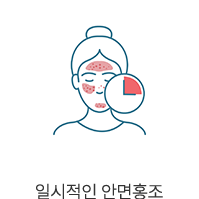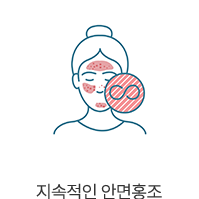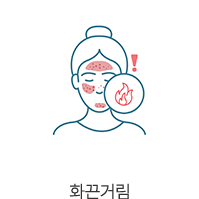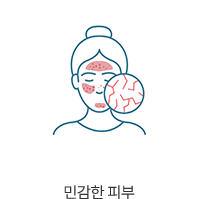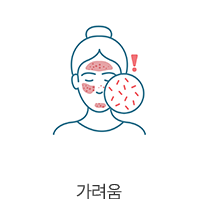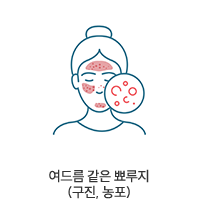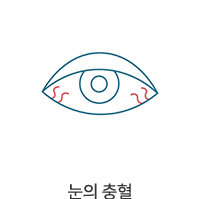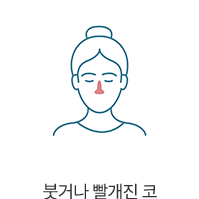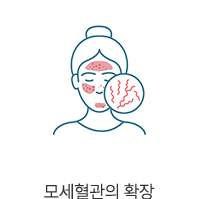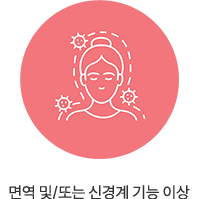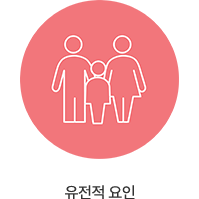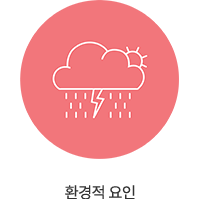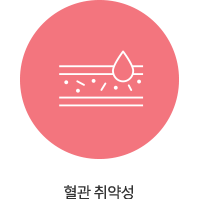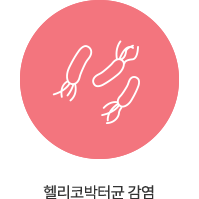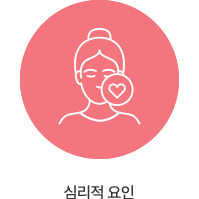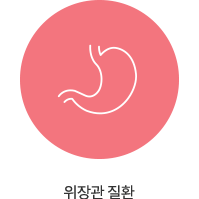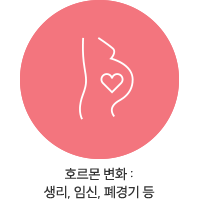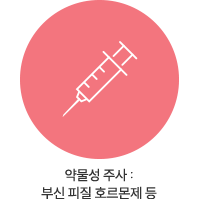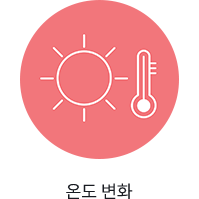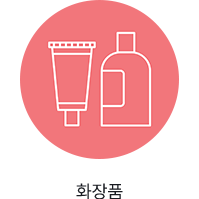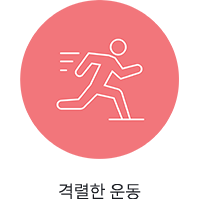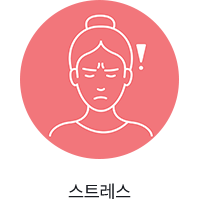


'주사'(Rosacea)는 만성 염증성 피부 질환으로, 주로 얼굴 중앙 부위인 코와 뺨에 발생하며,
때때로 눈에도 영향을 미칩니다.
'주사'(Rosacea)의 주요 증상은 빨간얼굴(안면 홍조), 화끈거림, 민감한 피부, 가려움,
여드름과 비슷한 뾰루지(구진과 농포), 눈의 충혈, 붓거나 빨개진 코, 모세혈관의 확장 등이 있습니다.
이러한 증상은 사람마다 다르게 나타나며, 몇 주에서 몇 달 동안 악화되었다가 잠시 사라지기도 합니다.
'주사'(Rosacea)는 성인 남녀 모두에게 발생할 수 있지만, 여성에게 더 흔하게 나타납니다.
완치가 어려운 질환이지만, 적절한 치료와 생활 습관의 조절을 통해 증상을 관리할 수 있습니다.
'주사'(Rosacea)의 증상은 사람마다 다르게 나타납니다. 다음은 주사의 대표적인 증상들입니다.
원인
'주사'(Rosacea)가 생기는 원인은 무엇인가요?
'주사'(Rosacea)의 구체적인 원인은 아직 밝혀지지 않았지만 다음과 같은 다양한 요인이 작용할 수 있습니다:

'주사'(Rosacea)는 피부에 증상이 나타나는 질환으로, 정서적인 부담을 주는 것으로 알려져 있습니다. 안타깝게도 '주사'(Rosacea)는 만성적인 질환으로 완치가 어렵지만, 적절한 치료와 생활 습관 개선을 통해 증상을 관리하고 삶의 질을 개선할 수 있습니다.
'주사'(Rosacea)를 치료하지 않고 방치하면 시간이 지남에 따라 악화될 수 있으므로, 가능한 빨리 피부과 전문의와 상담하여 치료를 시작하는 것이 중요합니다. 전문적이고 지속적인 치료를 받으면 심한 '주사'(Rosacea) 환자도 '주사'(Rosacea)의 특징적인 증상 없이 깨끗한 피부를 얻을 수 있습니다.
'주사'(Rosacea)의 증상을 악화시키는 요인은 다양하며 사람마다 다르게 작용하거나 시간이 지남에 따라 악화 유발 요인이 변할 수도 있습니다. 4-7
기록하기
'주사'(Rosacea)가 악화되는 시기 전후로 무엇을 하고, 먹고, 마셨는지 확인하고 관리하는 것이 필요합니다.
'주사'(Rosacea)가 있는 사람은 특정 성분에 반응할 수 있는 민감한 피부를 가지고 있습니다.
사람마다 피부가 다르기 때문에 피부과 전문의의 도움을 받아 자신에게 맞는 스킨케어 성분과 피해야 할 성분을 알아두는 것이 중요합니다.
-
클렌징, 보습 및 보호
'주사'(Rosacea)는 피부를 민감하게 만들 수 있으므로 저자극 세안 제품을 선택하세요.
대부분의 비누와 세안제는 피부의 pH를 높여 자극을 유발할 수 있으므로 사용을 피하세요.
'주사'(Rosacea)를 자극하지 않도록 미지근한 물을 사용하고 피부를 문지르지 마세요.
가능하면 무향료의 스킨케어 제품을 선택하고 자외선 차단 지수(SPF) 30 이상의 자외선 차단제를 사용하여 피부를 보호하세요. -
피부 수분 유지
건조한 겨울철에는 물을 충분히 마시고 가습기를 사용하세요. -
제품 성분을 확인하시고, 성분이 적을수록 피부에 자극이 적다는 것을 기억하세요
알콜 성분과 같은 자극 성분이 있는 애프터쉐이브 로션, 향수 및 스킨케어 제품을 피하세요.
무향료 저자극 제품을 선택해 주세요. -
피부의 온도가 올라가지 않게 해주세요
목욕이나 샤워를 할 때 뜨거운 물 대신 미지근한 물을 사용하세요. 피부가 갑자기 빨개지는 '홍조'를 피하기 위해 뜨거운 물과 차가운 물을 번갈아 가며 목욕하지 마세요. -
부드러운 원단 선택
피부 자극을 줄이기 위해 면과 실크와 같은 천연 섬유를 사용하시고, 양모는 피하세요.
피부를 말릴 때는 가볍게 두드리는 것만으로도 충분하며, 타월 등으로 세게 닦지 마세요. -
자외선으로부터 피부 보호
자외선은 '주사'(Rosacea)를 악화시킬 수 있습니다. 따라서 직사광선을 피하고 자외선 차단제를 매일 바르세요.
(겨울철, 날씨가 흐린 날에도 자외선 차단제를 사용해 주세요)
피부에 자극을 주는 성분과 향료는 피하고, 자외선 A와 B를 동시에 차단하면서 방수 기능이 있는 SPF 30 이상의 자외선 차단제를 선택하세요.
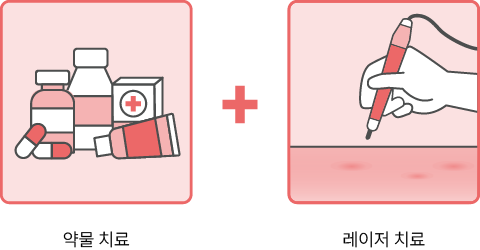
먹는 약, 바르는 약과 같은 약물 치료와 레이저 치료 및 시술 등 다양한 치료법이 있으며
환자의 증상에 따라 달라질 수 있어 피부과 전문의의 진료와 상담이 필요합니다.
Reference
- https://www.rosacea.org/blog/2018/april/415-million-people-affected-by-rosacea-worldwide
- Gether L, et al. Br J Dermatol. 2018;179:282–9
- Huynh TT. Am Health Drug Benefits. 2013;6(6)
- DermNet NZ. Rosacea: Symptoms, Causes, and Management. 2022. Available at: https://dermnetnz.org/topics/rosacea
- SungChul Kim. Korea pharmaceutical information center http//www.health.kr/Menu.PharmReview/_uploadfiles/안면%20홍조의%20합리적%20접근법.pdf
- https://www.faceuptorosacea.com/manage-your-rosacea
- American Academy of Dermatology Association. Triggers Could Be Causing Your Rosacea Flare-Ups. Available at: https://www.aad.org/ public/diseases/rosacea/triggers/find.
- American Academy of Dermatology Association. Rosacea Skin Care Tips. Available at: https://www.aad.org/public/diseases/rosacea/triggers/tips
- Pharmacy Times. Coping with Rosacea: A Guide from Triggers to Treatments. 2011. Available at: https://www.pharmacytimes.com/view/-coping-with-rosacea-
a- guide-from-triggers-to-treatments - Schaller M, et al. Br J Dermatol.2020;182(5)


